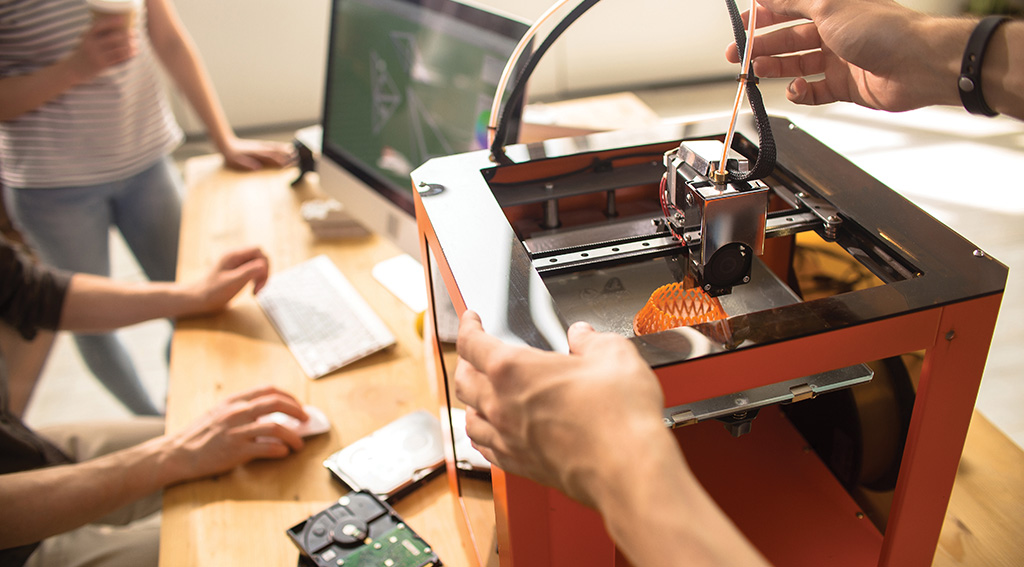
School board members are working with their communities to prepare students to be thinkers, leaders, and creators. For example, California’s San Jose Unified School District helps students develop digital literacy and five key skills: critical thinking and problem solving, creative thinking, communication, collaboration, and global citizenship. At Ohio’s Lorain City Schools, school leaders have set a strategic goal: By spring 2025, all students after graduation will be ready to enroll in a postsecondary institution, secure employment, enroll in an apprenticeship, or enlist in the military.
A 2020 research report by Deloitte, “The Fourth Industrial Revolution,” says that 2025 and beyond will mark an era in which Industry 4.0 will demand more well-trained workers. The three previous industrial revolutions were (1) manufacturing machines that used waterpower and steam power, (2) mass production and assembly lines powered by electricity, and (3) computers and automation. Manufacturing industries are moving toward higher levels of automation, cyber-physical systems or intelligent systems, and big data used to develop computer-based algorithms to control and monitor manufacturing processes.
Approximately 4.6 million jobs will have to be filled in manufacturing in the U.S. over the next decade, according to Manufacturing USA, a national network of 16 manufacturing innovation institutes. Examples of Industry 4.0 jobs are:
- Optics technicians, who work with scientists and engineers in the development, design, manufacturing, and quality control of optical components.
- Manufacturing positions producing flexible hybrid electronics (FHE), devices widely applied in military and medical supplies.
- Cybersecurity specialists. In 2021, more than 1 million people were employed in cybersecurity in the U.S.; additionally, there were more than half a million job openings.
The Skills Gap
A lack of trained workers has led to more than half of the positions in advanced manufacturing going unfilled. In general, the skills students are currently learning do not match those needed for Industry 4.0. Specifically, the current curriculum lags rapid technology advances; the connection between K-12 education and industry is insufficient; and Industry 4.0 education needs more funding.
Soft skills (e.g., dependability, reliability, and adaptability) also are critical for Industry 4.0 employers. In 2021, McKinsey & Company examined the impact of COVID-19 on employment, and found that adaptability, coping with uncertainty, and synthesizing messages are soft skills.
Five models in practice
To close the skills gap, school districts are forming partnerships with Industry 4.0 education institutes. Their practices focus on three areas: curriculum and learning environments, educators’ professional development, and pathway and pipeline programs.
Model 1: 3D printing
Also known as additive manufacturing, 3D printing’s building process adds instead of subtracts raw material. Many districts have added 3D printers and transformed their makerspaces. The learning spaces equipped with 3D printers help students be creative and engage in learning.
Model 2: Learning labs
Industry 4.0 learning labs are venues or facilities created by Industry 4.0 institutes through collaboration with K-12 educators. Such labs help students develop skills for jobs of the future. For example, under the “Learn Everywhere” program that New Hampshire adopted in 2020, one district turned a “boring” computer course into an attractive computer programming class through collaboration with a local esports program.
Model 3: Algebra I and advanced curriculum
Math is the foundation for students to join the workforce of Industry 4.0. Middle school is a critical juncture when a love of math should be encouraged. Unfortunately, about 30 percent of school districts in the U.S. do not offer Algebra I in eighth grade. Evidence shows that if students must wait until high school to take Algebra I, they will have fewer opportunities to take calculus before graduation. The U.S. Department of Education points out that not offering Algebra I courses in middle school is the leak in the STEM pipeline. Students should take algebra early.
Model 4: Professional development
K-12 educators are receiving more training opportunities for Industry 4.0. For example, the federal government holds free “counselors4computing” workshops every year for middle- and high-school educators. The University of New Hampshire received a five-year grant from the federal government to help build a workforce for the state’s growing biotechnology sector. The grant included training middle and high school teachers to improve STEM education for students from the state’s most ethnically diverse school districts.
Model 5: A path with a plan
About a quarter of students who enrolled in college in 2017 did not return for their second year, according to the National Student Clearinghouse. Many people drop out of college or their postsecondary programs because of the lack of a personalized career plan. In 2021, the Advanced Regenera-tive Manufacturing Institute (ARMI) launched BioFab Futures, a virtual, personalized career development program for high school students. The online course helps students to understand their interests and career aspirations, and then create an action plan to begin exploring a career in biofabrication that is matched with their goals.
School leaders should envision Industry 4.0 and equip students with a more demanding set of skills needed for the future workforce.
Jinghong Cai (jcai@nsba.org) is the senior research analyst at NSBA’s Center for Public Education.

Share this content